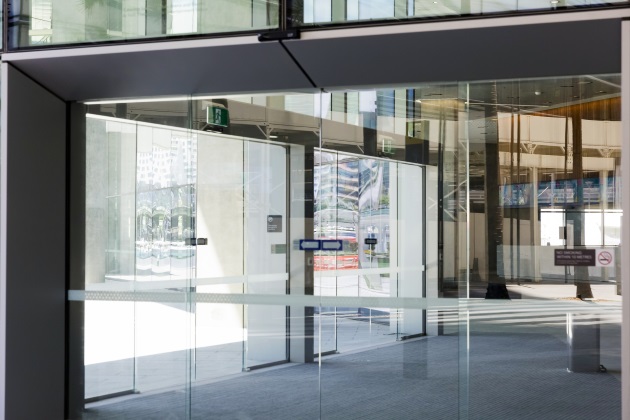In and out, all day long, nearly every day of the year. Doors. You may take the barriers that keep the outside out and the inside in for granted. But your facility’s doors are nothing to overlook. Kind of like the roof above, they keep your buildings protected, safe and secure, and the unsavory elements — both weather and humans — out.
Proper maintenance is a must, but in many cases these most mobile pieces of your building probably only get attention if they do not work properly, if they squeak or if they don’t lock correctly. Doors and their hardware require more maintenance time and effort than almost any other building component, as they withstand high levels of use and abuse. With expanding requirements for the role that doors and door hardware must play in building operations, such as providing unrestricted egress, paying attention to door operations has become increasingly important to facility managers.
Most door maintenance programs are reactive. Unfortunately, this reactive approach increases maintenance costs and puts safety and security at risk. Paying attention to doors and their hardware by performing preventive maintenance can pay off in a big way. For example, energy loss through gaps between the door and its frame can be minimized, meaning fewer expenses during the cold winter months and hot summer months.
Preventive maintenance is just one element of an effective door management program. But in many door management projects, door and hardware selection often is a task for a contractor. Door contract specifications may call for a type of door or type of hardware, but rarely do they go into the detail of specifying what from what manufacturer is to be installed.
Per FacilitiesNet.com, “not being involved in the selection process means that what gets installed may not be the best match for the operation. What works well in one application may not be suitable for another. Selecting the wrong type of hardware can put security at risk, hinder operations, or increase maintenance costs.”
Another issue that you may face is your attempts to maintain a number of different door types that can lack standardization. For example, door models and hardware are often not standardized.
Many facilities are equipped with similar doors from a range of manufacturers, which must be maintained with an ever-increasing stock of replacement parts.
Standardization allows facility managers to take a typical selection of repair parts with them on most maintenance calls. Nevertheless, when a door needs maintenance, address the need immediately. To prevent any problems, review and inspect all doors for proper operational capabilities monthly.
Overhead Doors
Maintaining overhead doors is different than internal/external doors, and so is their maintenance. With these, a more regular schedule often is recommended, which includes a number of steps, GarageDoorCare.com points out.
For example, monthly visual inspections are a great idea. For these, you should standinside the garage with the garage door closed and look over the door springs, cables, rollers, pulleys and mounting hardware for signs of wear or damage.
Look for cable wear or fraying. Is the mounting hardware becoming loose? If something doesn’t look quite right — or doesn’t sound quite right — it could be the symptom of a more serious issue. Have the garage door system inspected by a trained service technician.
The site also recommends the following tests and tips for overhead doors:
- Monthly reversing mechanism test
- Monthly photo eye test
- Monthly force setting test
- Semi-annual lubrication
While these points are all high level, in the very least you have an understanding of the importance of door control maintenance for the benefits of the facility, the protection of its people and the safety of the equipment.

